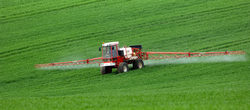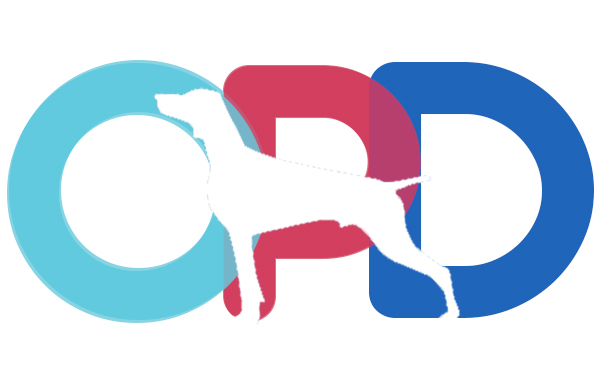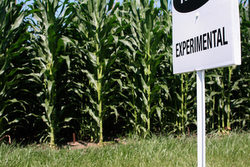Saying “natural organic dog food” is like saying “mediocre exceptional dog food. ” “Natural” and “Organic” are two separate classes. They are both better than the typical commercial pet food but they require distinction from each other.
We’ll get into the differences a little way down the page, but in the mean time we can refer to the two collectively as “natural organic dog food.”
This page includes a few topics to explore to help you better understand how natural organic dog food differs from most commercial dog food, including:
- Agencies & Organizations Setting Organic Dog Food Standards
- Commercial, Natural and Organic Food Analysis – Basic Differences
- Negative Impacts of Bad Dog Food Elements
- 10 Best Dog Food Options on the Market by Category (on a different page)
Is this topic not quite what you were looking for?
Check out our other natural organic dog food pages:
Let’s get the bad news out of the way first: Unlike agencies such as the FDA for people food, there are no regulatory agencies currently in place that enforce the natural organic designation in pet food.
One popular organic brand, for example, labels all of their food “organic” but admits on their FAQ web page that as much as 30% of all ingredients used in the formulation of their brand of foods is not organic.
Fortunately there is some good news to soften the blow…
- There are a few organizations that set natural organic dog food standards (more on this below), and a couple even allow manufactures to have their processes certified. These organizations require ongoing review for the stamps of approval to stick.
- The Feds realize that the industry has a problem, and the USDA is currently reviewing proposed organic standards for pet food. In the mean time you can read the below chart to understand the benefits of going “natural” or “organic.” After all, there are several brands – both new and established – that maintain integrity by sticking to USDA standards.
Agencies & Organizations Setting Natural Organic Dog Food Standards
AAFCO – Association of American Feed Control Officials
AAFCO provides guidelines for states to develop their own policies for regulating animal feeds. They also research and update their recommendations as new findings come to light. Even though AAFCO has no power to enforce dog food manufacturers who claim to adopt their guidelines, pet food companies who make this claim are likely to have their heads in the right place.
Oregon Tilth Certification Program
Oregon Tilth Certified Organic (OTCO) has an organic dog food analysis that ensures that growers, handlers and processors of organic food are living up to their set standards from start to finish. Their rigorous requirements include production standards, on-site inspections and legally binding contracts.
Center for Veterinary Medicine (CVM)
The only group that has any actual authority over pet products is the FDA’s Center for Veterinary Medicine (CVM). Their primary purpose is to evaluate “the safety and effectiveness of drugs used to treat more than 100 million companion animals.” According to CVM, nearly 300 drugs currently on the market have been approved by the FDA for America ‘s dogs, cats and horses. Unfortunately, their power does not extend too deeply into dog food.
United States Department of Agriculture (USDA)
Although the USDA does not regulate the pet food industry (yet), it does regulate food intended for human consumption that you can mix with your natural organic dog food of choice. If a people food product is labeled “natural”, the USDA requires the label to explain exactly what that means. They also have requirements for using “organic” labeling.
Commercial, Natural and Organic Dog Food Analysis – Basic Differences
In the chart below, “Yes” and “No” refer to the base standards of the USDA for people food.
“Maybe”, “High” and “Low” refer to what you can typically expect when purchasing people food labeled “Organic,” “Natural” or those foods with no Organic or Natural distinction (i.e. “Commercial”). Implications of each of the topics can be found below the chart.
You can also use this table when reading pet food labels, but keep in mind that these terms are not yet enforced for pets so take them with a grain of salt. You should always read the label and make the appropriate judgment for your dog.
| Variable | Commercial | Natural | Organic |
|---|---|---|---|
| High Heat & Extrusion Food Processing | Yes | Maybe | Maybe |
| Antibiotics | Yes | Maybe | No |
| Herbicides | Yes | Maybe | No |
| Pesticides | Yes | Maybe | No |
| Human-grade Meats | No | Maybe | Yes |
| Animal Byproducts (blood, waste, “meal”) | Yes | No | No |
| Artificial Colors | Yes | No | No |
| Chemical Preservatives | Yes | No | No |
| “Filler” Foods (Cheap carbohydrate-rich added food. Includes poor carbohydrates like sugar and corn syrup) | Yes | No | No |
| Variable | Commercial | Natural | Organic |
| Genetic Modification | Yes | No | No |
| Grain Quality (nutritional value and healthy elements) | Low | High | High |
| Meat Quality (nutritional value and healthy elements) | Low | High | High |
| Vitamin and Mineral Content | Low | High | High |
| Cost (You get what you pay for) | Less expensive | As low as half the cost of organic dog food. | More expensive Up to twice as much as commercial. More expensive Up to twice as much as commercial. |
| Availability | Abundant | Can be limited | Can be limited |
| Alternatives | Natural, organic and human food are all better | “organic” and “human” food are better | “human” food is better (until pet food is more strictly regulated – see below) |
Known Effects of Ignoring Natural Organic Dog Food
The potential negative impacts of the harmful elements above extend beyond their direct effects listed below. They use up your dog’s energy to eliminate toxins when that energy should be used for more constructive purposes.
High-heat and extrusion food processing
Even if you find a commercial pet food manufacturer who uses good ingredients, the high heat used to sterilize the food usually destroys much of the nutritional value. For this reason it is usually a good idea to add raw natural dog food or partially cooked dog food to your dog’s diet.
Antibiotics, Herbicides and Pesticides

These have been found to lead to chronic disease. In addition, if your dog’s body cannot rid itself of these toxins, they will build up inside the dog. Built up chemicals can interact with each other in several harmful ways.
Human-Grade Meat
Human-grade meat must be tested and certified by organizations like the FDA, USDA and Oregon Tilth . For this reason, they should be considered safe for your dog and added to their diets to supplement the unregulated pet foods.
Animal by-products
Are you ready to get hungry? Animal by-products commonly found in commercial dog food can include feathers, hair, leather, gristle and fecal waste. Mmmmmm…fecal waste.
Meat and bone meal (usually made of ground bone, gristle and tendons) is the cheapest and least nutritious of all the by-product meals. In addition to being unhealthy in many other ways such as leading to canine tumors, about 25% of the protein in meat meal cannot be used by dogs’ bodies.
Artificial Colors
Don’t let the appearance of a dog food fool you! Dogs are color blind, so pet food manufacturers only change the color and texture of dog food to make it look better to YOU, not your dog.
Natural organic dog food looks grey and bland because it does not have potentially harmful artificial colors. All your dog cares about is the way the food smells and tastes (pet food manufacturers also put unhealthy stuff in pet food to trick the dogs too, by the way).
The effects of artificial coloring have not been fully tested, but they are believed to increase sensitivity to viruses and could potentially cause cancer.
Chemical Preservatives

Chemical preservatives can have many harmful effects, including:
- Allergic reactions to dog food
- Behavioral problems
- Chronic dog diarrhea
- Dehydration
- Dog diabetes from stress on the adrenals and pancreas
- Dry, itching dog skin
- Excessive thirst
- Fetal abnormalities
- Hair loss
- Inhibit the growth of useful intestinal bacteria
- Liver damage
- Metabolic stress
- Dog obesity from additional calories with no nutritional value
- Reduce the absorption of “good” parts of food
- Serum cholesterol increase
- Dog teeth and gum problems
- Head explosion (just kidding – if you’ve made it this far down the list I think you get the point)
“Filler” Foods
Carbohydrates can have a lot of great nutrients if they are high quality.
“Filler” carbs, on the other hand, such as sugar and corn syrup lead to dog obesity. They fill your dog up with unhealthy food that takes the place of nutrient-rich wholesome food. In contrast, good natural organic dog food uses vitamin and nutrient-rich sources of carbohydrates.
Genetically Modified Or Ganism (GMO)
GMO refers to plants and animals that have been genetically modified (GM). Negatives of products with genetic modification include:
- Environmental damage – long term effects on the environment are unknown.
- Risk to food web – could genetically altered crops hurt other animals that feed on them?
- Cross-pollination – we don’t know the effect on the offspring of GM crops that cross-pollinate with non-GM crops. Could the prevalence of stronger crops create stronger pests that we may not be able to control?
- Allergies and toxins – very little research has been conducted on the effect of GM food on long-term human health.
- Disease – some crops are modified using DNA from viruses and bacteria. Could this lead to new kinds of disease?
Natural organic dog food is never derived from genetically modified plants and animals.
Vitamin & Mineral Content

The plants used to make natural and organic dog food are given more time to grow and are planted in soil that has not been depleted of nutrients through overuse. Plants used to make most commercial dog food are often given growth stimulators that speed up harvest time which means plant has less time to absorb nutrients.
In addition, new plants with the same growth stimulators are immediate planted after each harvest, so the soil is deprived of nutrients. No nutrients in the soil = no nutrients in the plants = no nutrients in the dog food.
Natural and Organic Dog Food Analysis – Best Choices on the Market
Very few natural organic dog food brands consistently pass our Healthy Dog Food Label Test dog food ratings with flying colors. As covered in our How to Read a Dog Food Label article, dog foods must have the following at a minimum in order to receive a 5 out of 5:
- Main ingredient must be listed first on the ingredient list
- Complete, balanced and 100% nutritious ingredients
- Zero potentially harmful ingredients
- Natural or organic ingredients
- Contain no artificial colors, chemical preservatives or by-products
- Ingredients must not have been exposed to antibiotics, herbicides or pesticides
- Contain no “filler” foods (unhealthy food like sugar or corn syrup that takes the place of healthy food)
- Contain no Genetically Modified Organisms (GMO’s)
Click here to review our 10 Best Dog Food Options page for natural organic dog food recommendations, including food for:
- Dogs in good health
- Active dogs
- Vegetarian dogs
- Dogs with dog food allergies
- Overweight dogs
- Dogs in need of a high fiber diet
Do you believe in holistic pet care? If so, please tell your friends about us at OrganicPetDigest.com. Thank you for supporting our efforts!





